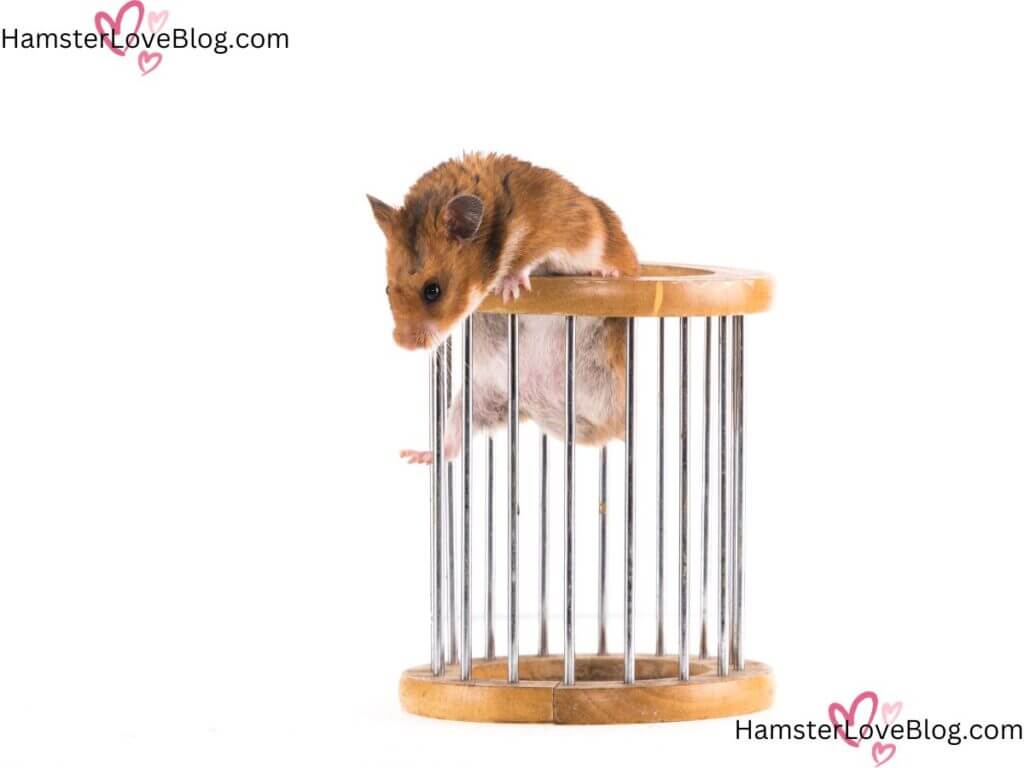
Have you ever noticed your new Syrian hamster turning its cage into a miniature Olympic stadium, jumping with gusto you didn’t know these fluffy creatures had? It’s like they’ve watched too much parkour on Hamster YouTube and are now trying to recreate those death-defying stunts in their cramped living quarters. Before you start wondering if you’ve accidentally adopted a hamster with aspirations of joining Cirque du Soleil, let’s dive into why your pet is bouncing around like a fur-covered rubber ball.
Why Do Hamsters Jump?
Understanding the Natural Behavior of Hamsters
Hamsters, especially the sprightly Syrian variety, are the Houdinis of the pet world, always plotting their next escape attempt. It might seem like your hammie is trying to leap out of its cage to freedom or simply testing the limits of hamster physics. But in reality, jumping is a built-in feature in the hamster software suite, designed to help them evade predators, explore their surroundings, and workout those tiny leg muscles. Imagine them in the wild, leaping through the Syrian desert—only instead of endless sands, it’s bedding and chew toys.
How Jumping Mimics Their Wild Instincts
When your Syrian hamster eyes the top of the cage, they’re not just admiring the view—it’s their wild instincts kicking in. In their natural habitat, these hamsters are adept at climbing and leaping to navigate the terrain and escape from threats. Now, confined within four walls, that jump around might just be their way of living out their Lara Croft adventures on a much smaller scale. It’s not so much a cry for help but an expression of their inherent need to climb, dig, and explore.
What Are the Risks Associated with Excessive Jumping?
While watching your hamster attempt to reach for the stars might provide hours of entertainment, there are downsides to this acrobatic endeavor. Excessive jumping can lead to injuries, particularly if their landing zone isn’t as soft as a cloud made of marshmallows. Think sprained legs, or even an unplanned exit from the cage, leading you on a household safari to locate the escape artist. Therefore, it’s paramount to ensure their habitat is as safe as it is exciting, blending the thrill of the jump with the comfort of a cushy landing.
Is Jumping a Normal Behavior for Hamsters?

Identifying Signs of Normal Behavioral Patterns
So, you’re witnessing your Syrian hamster turning every evening into parkour practice and wondering, “Is this the Cirque du Sofa auditions or normal hamster behavior?” Fear not, dear pet parent, for a bit of bouncing is perfectly healthy. These pocket-sized creatures have energy reserves that would put most energy drinks to shame, and jumping is merely a way for them to burn off some of that youthful exuberance. It’s also a hamster’s way of telling you, “Hey, I’m fit, I’m happy, and I’ve got moves you’ve never seen!”
How to Differentiate Between Playful Jumping and Stress-Induced Jumping
But it’s not all fun and games in the life of a high-flying hamster. There’s a fine line between a hamster who’s simply enjoying a bit of exercise and one that’s trying to jump out of its own skin due to stress. If your furry Houdini is trying to scale the walls incessantly, with no breaks in between to play or rest, it might be a call for help. Stress-induced jumping is often paired with other signs of anxiety: excessive bar chewing, overeating, or turning into a nocturnal ninja. This is when you should don your detective hat and consider what in their environment might be bringing on the bunny hops of despair.
How Can I Provide a Suitable Habitat for My Syrian Hamster?
Choosing the Right Cage Size and Setup for Jumping Activities
Creating a habitat that’s more “luxurious hamster resort” and less “prison for petty rodent criminals” starts with space. These furry friends need room to move, groove, and occasionally launch themselves into low orbit. A spacious cage with multiple levels and platforms can turn a mundane enclosure into a hamster playground, with enough distractions to make them forget they ever wanted to escape. Ensuring a variety of textures and heights will keep your hamster engaged, reducing the odds of them treating the cage like a trampoline park.
Introducing Enrichment Activities to Minimize Jumping Behavior
But why stop at a fancy cage? Your hamster’s inner Indiana Jones is just dying to come out, so why not indulge those exploratory instincts? Mazes, tunnels, and other enrichment toys can turn their cage into an adventure park. These activities not only channel their energy into something constructive but also mimic the challenges they’d face in the wild. It’s like telling your hamster, “Yes, life is an adventure, but let’s keep the death-defying leaps to a minimum, shall we?”
Ensuring Safety Measures to Prevent Injuries During Jumps
Despite our best efforts, hamsters will be hamsters, and the occasional leap of faith is inevitable. Making their cage as fall-proof as possible is your next line of defense. Soft bedding at the bottom of the cage can provide a safe landing for those less-than-graceful moments, reducing the risk of injuries. Think of it as installing airbags throughout their living area—because even Evel Knievel needed a safety net. Ultimately, your goal is to blend excitement with safety, ensuring your hamster’s acrobatics are thrilling but not hazardous.
What Are Some Toys That Can Help Redirect Your Hamster’s Jumping Behavior?
Exploring Toy Options to Keep Your Hamster Active and Engaged
Let’s get real: a bored hamster is a disaster waiting to happen. It’s like having a tiny, fur-covered tornado tearing through your living room. To prevent your pet from turning into a gymnast, consider introducing a variety of toys that cater to their climbing, digging, and exploring instincts. Climbing frames, bridges, and even simple DIY obstacles can keep your hamster engaged, channeling their boundless energy into activities that don’t involve breaking the sound barrier with their jumps.
Utilizing Hamster Wheels and Climbing Structures to Channel Energy
A hamster wheel isn’t just a cliché; it’s an essential tool in the pet parent arsenal to combat pent-up hamster energy. But why stop there? Adding climbing structures, ladders, and platforms can turn a regular cage into a fitness paradise for your furry friend. It’s about giving them options to explore, climb, and satisfy their curiosity in ways that don’t involve aerial stunts. Think of it as creating a training camp for fluffy athletes, where every day is an opportunity to explore new heights—safely, of course.
Introducing Chew Toys and Treats to Distract from Excessive Jumping
Last but not least, never underestimate the power of a good chew toy or a tantalizing treat. These not only keep your hamster’s teeth in check but can also occupy them for hours on end. Placing treats within toys or scattering them around the cage encourages natural foraging behavior, turning snack time into an adventure. It’s a simple yet effective way to redirect their energy from jumping to munching. After all, it’s hard to practice your high jump when you’re busy solving the mystery of the hidden treat.





